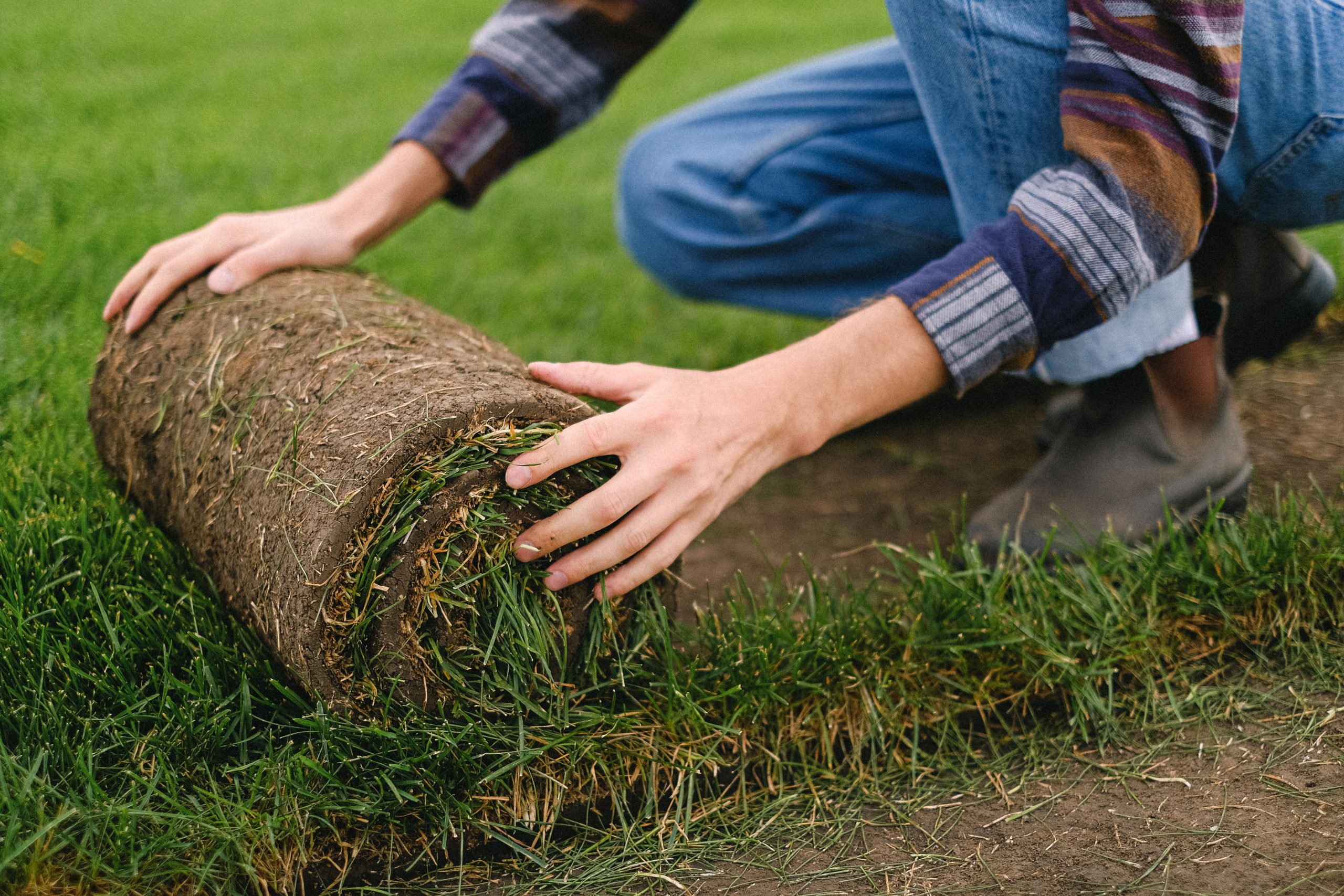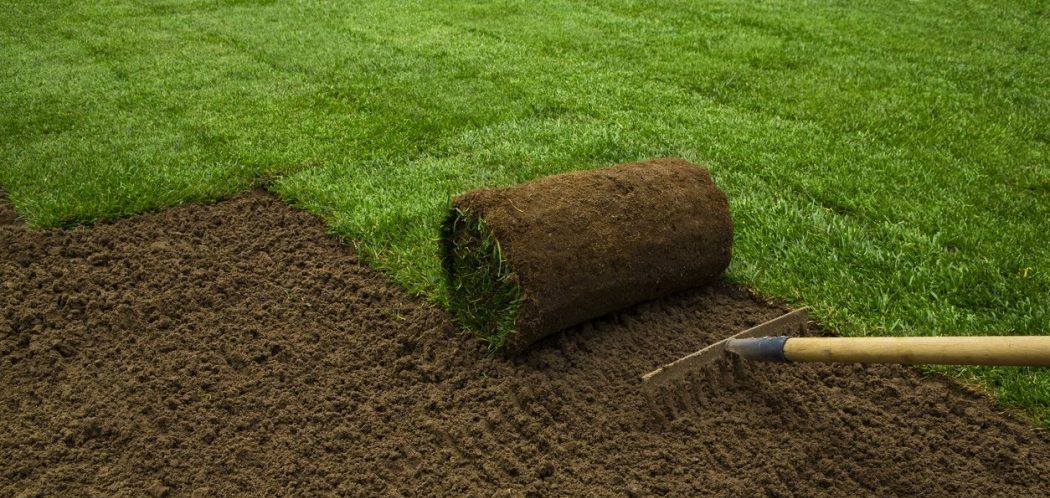As a homeowner, few sights may upset you more than walking outside and noticing the once pristine edges of your perfectly installed sod lawn beginning to dry, brown, and aggressively curl upward. Sections of your beautifully manicured, emerald green grass that was the envy of every neighbor just days or weeks before now appears potentially damaged, stressed, and deteriorating before your eyes.
In this comprehensive guide, we’ll cover:
- Recognizing the typical causes and factors that trigger sod edge curling
- Immediate solutions to rehydrate, repair, and revive drying curled edges
- Developing proactive long-term prevention strategies through consistent proper lawn care
- Recovery methods and sod patch repair for severely damaged areas
What Triggers My Sod Edges to Dry Out and Curl Upwards?
Sod blades curling upwards from the edges typically signals the grass plants are unhealthy and under some form of environmental stress or pest pressure. But multiple underlying culprits could be contributing to create the sod distress. Start troubleshooting by closely evaluating your lawn’s curled areas for any signs pointing to:
Dehydration Stress
Insufficient or inconsistent watering often leads to sod drying out, turning brown, and curling up from moisture deficiency. Newly laid sod requires approximately 1-2 inches of total water application per week from irrigation or rainfall to remain hydrated while roots establish.
Probe down into the soil using a screwdriver in both curled and healthy areas to compare moisture levels. Curling and browning only in isolated high spots or sections far away from irrigation sprinkler heads can point to poor coverage leaving those areas starved for water.
Examine your current lawn watering schedule and routine. Does your system provide adequate, evenly distributed hydration? Are any zones malfunctioning? Review for improvements.
Heat and Sun Exposure Stress
Prolonged exposure to intense direct sunlight leads to excess transpiration and causes sod edges to rapidly dry, turn brown, and begin desiccating. This progression of damage typically starts with dry, shriveled grass blades before extending into the scalding and shrinkage of the soil layers underneath, causing edges to lift and tightly curl.
South or west-facing lawn edges located near walls, fences, or driveways with high sun reflection are particularly prone to overheating, as are areas bordering on expanses of bare mulch or soil that radiate additional warmth.
Measure daytime temperatures at lawn level in both damaged areas and adjacent healthy sod using soil thermometers. If curled sections are significantly hotter, heat stress is likely the catalyst.
Poor Root Establishment
Obstructions just below the surface such as large stones, construction debris, or air pockets can prevent tender new sod roots from properly anchoring down into the soil. As the developing root system struggles, the sod essentially loses physical soil contact underneath and begins drying and detaching from the edges where topsoil is thinnest.
Carefully pull back the curled-up edges of affected areas and inspect the density and depth of the root mass underneath. Curling sod with minimal to no visible root penetration indicates major root development issues are present.
Pest or Disease Damage
Occasionally, sod edge curling and browning can stem from unseen damage caused by subsurface lawn pests or diseases impacting the tender new roots and lower grass tissue:
- Root-feeding grubs and chinch bugs can sever roots leading to water starvation.
- Armyworms may chew on crowns and blades, destroying living foliage.
- Fungal diseases can rot root structures or infect plant vascular tissues.
Inspect closely for any signs of surface leaf chewing, tunnels, grub larvae in soil, insect swarms, fungal mycelium, abnormal wilting, and other symptoms pointing to pest or disease activity. Submit samples to diagnostic labs for verification.
Once you’ve narrowed down the likely cause, it’s time to start restoration…
Implementing Immediate Corrective Solutions to Revive Curling Sod
Upon first noticing sod curling and drying on the edges, quick action is key to nourish and revive it before extensive die-off occurs. Prioritizeimplementing these remedial care tactics customized to your lawn’s specific situation:
Adjust Irrigation Duration and Frequency
Double check that the curling sod areas receive ample irrigation coverage. Temporarily increase watering to 20-30 minutes daily in the early mornings until lower soil again stays consistently moist.
Monitoring moisture levels frequently with a soil probe prevents further desiccation damage while the compromised roots recover and strengthen. Gradually taper watering back down to normal levels as curling and browning improves.
Provide Temporary Afternoon Shade
Drape shade fabric, window screening, or mesh over the damaged areas to filter intense sunlight and lower soil temperatures while attempting to rehydrate affected tissue. Remove the shade once sod firms back up to allow gradual re-exposure.
Avoid total light blockage, as the grass still needs some daily photosynthesis. Light netting or partial shade will sufficiently mitigate the harshest effects until recovery occurs.
Aerate Compacted Areas
For sod that feels spongy, hardened, or extremely dense underneath, use a core aerating tool or screwdriver to poke numerous holes every 4-6 inches deep into the soil profile.
Relieving any subsurface compaction improves water, nutrient, and oxygen absorption down into the root zone.
Control Active Pest Infestations
For curling confirmed to be caused by pests or disease, apply appropriate insecticide or fungicide treatments specific to the diagnosed problem at recommended rates suitable for sod lawns.
Successfully eliminating lawn damaging grubs, insects, or pathogenic fungi is the only way sod can fully bounce back from associated tissue and root structure damage.
With recovery underway, let’s discuss prevention…
Develop a Proactive Long-Term Curling Prevention Strategy
While quick curative care can certainly restore cured sod once it occurs, the ideal solution lies in proactively preventing curling and maintaining turf health through diligent, consistent lawn maintenance and care all season long:
Never Skip Mowing, Watering, or Feeding Schedules
During growing seasons, continue mowing at least weekly at the proper height for your sod type, removing no more than 1/3 of blade length per cut.
Provide thorough, deep watering 2-3 times weekly supplemented by rainstorms to keep soil moist to a 4-6 inch depth.
Apply balanced fertilizer according to soil test recommendations to continuously nourish sod and strengthen its resilience.
Letting any of these core maintenance practices slide leads to added grass stress, growth issues, and vulnerability to problems.
Test Soil Regularly and Incorporate Recommended Amendments
Conduct standard soil tests at least annually to monitor pH and key nutrient levels. Apply amendments like lime, compost, fertilizer, or gypsum as needed to maintain ideal growing conditions for your particular sod variety.
Weak soil devoid of a healthy balance of minerals and microbiome diversity results in poorer root development and inability to handle stresses – conditions ripe for curling.
Routinely Monitor Sod for Early Signs of Issues
Walk your lawn at least weekly, inspecting along edges, seams, and other typical problem spots for early signs of drought stress, pest activity, disease development, or irregular drying patterns.
Catching issues in their earliest stages allows quickly reversing damage when it’s still minimal and before extensive browning and die-off expands.
Install Physical Barriers for Element Protection
Use fencing, privacy hedges, shade trees, or decorative walls to help protect against drying winds, reflected heat, and intense direct sunlight hitting tender young sod edges if such exposure is contributing to your curling damage.
These physical barriers prevent overexposure to environmental extremes that tax sod’s tissue and root health. Proper siting can make a big difference.
When prevention fails, repair tactics are called for…
Sod Recovery and Repair Options for Badly Damaged Areas
For lawn sections where the sod continues rapidly declining despite your best efforts at remedial care, replacement and repair will become necessary:
Cut Out and Patch With New Sod
Remove and dispose of any fully desiccated or dead sod portions. Till the low spots, fill with fresh topsoil, level, and tamp down. Cut new sod patches slightly larger than the area and inset flush with surrounding lawn height.
When patching, match your existing sod variety and thickness to avoid texture/color differences. Stagger the edges of patches in a bricklike pattern for better knitting.
Apply Root-Boosting Supplements
For curled areas still marginally intact, specialty products containing formulations of sea kelp, mycorrhizae fungi, amino acids, biostimulants, or rooting hormones can help regenerate root growth when applied early after initial curling.
Follow product labels for timing around sod damage events and recommended mixing rates to provide the best restoration results.
Top Dress and Level Patched Areas
After patching subsides, apply a thin layer of topsoil across any remaining low spots and fill in with fresh sod plugs. Work the added soil incrementally with a rake until flush with surrounding lawn height for a smooth, even surface.
Properly leveling repaired areas allows regaining mowing continuity and ideal water dispersion across the lawn.
Addressing sod edge curling in a timely fashion gives you the best chance of restoring your lawn’s flawless beauty. Stay vigilant through attentive lawn care practices and quick action when needed, and your prized sod will thrive curl-free for years to come. For especially challenging cases, expert assistance may be advisable.
What tips can you share on successfully reversing problematic curling sod edges in your own lawn care experience? Let’s keep the conversation growing in the comments to help all homeowners protect and revive their sod investment!





